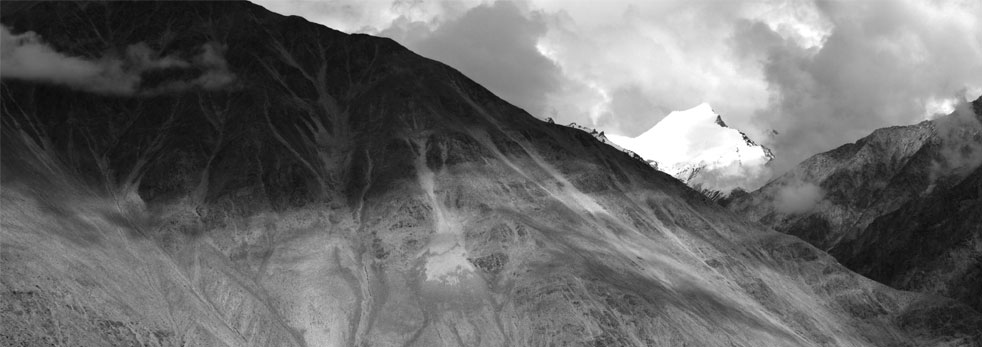
By Mohammed Arfan Asif
Mohammed Arfan Asif an Indian National based in the United Arab Emirates for more than two decades, has been involved with photographic art right from his school days. The late 1980s saw him exhibiting his works in National and International photographic expositions. He has received a number of international distinctions and awards for photographic merit and services rendered in photography. Arfan has lectured on photographic subjects, judged photo contests, written columns for photography and natural history magazines and traveled to exotic destinations in pursuit of photographic subjects. Presently, Arfan mentors a small group of photographic enthusiasts in Dubai and aspires to make images that are meaningful and interesting.
Nature in the landlocked northwestern corner of India reveals not only a different hue but a starkness and unspoiled character which is difficult to match anywhere in the world. At more than 3,000 metres Ladakh is a paradise for landscapers as well as those interested in trekking, cycling and biking. Ladakh lies between two vast mountain systems, the Karakorum to the north and the Himalayas to the south. These ranges are believed to have been formed over a period of 45 million years.
Interestingly the terrain that covers 60,000 square kilometres and ranging in elevation from 3,000 metres to 7,000 metres. The landscape can drastically change in minutes as moving clouds briskly take you to another world. The Indus River keeps following you all the way as you meander between the granite mountains and the high passes.
The moistureless, rarefied air and extreme cold weather climes may be a challenge, but the sheer visual splendour helps you overcome the high elevations quite easily. Cloudbursts are a concern as and when they happen; heavy rains can cause havoc and present the anger of the mountains! Ladakh has very low rainfall of just 102 millimetres a year and the inhabitants with their mud houses are not prepared for sudden cloudbursts. Due to the absence of drainage leading out of this area, there are a number of beautiful salt- water lakes. The most popular being Tso Moriri, Tso Kar and Tso Pangong.
Ladakh was opened to tourism in 1974. Though this created a better economy and cash influx, it will in the long term have effects not only on the cultural and agricultural aspects but also on the ecology of the region. In order to safe guard the terrain from overuse there is now a drive for renewable energy initiatives.
Of great interest in pictorial terms is to view the confluence of the arid land and the snow-clad mountains. The majestic peaks, unique ruggedness and the patterns that unfold as light plays hide and seek are a delight to watch. The avid landscapist does not have to search for compositions. All they have to do is, wait for the light to play around the mountains and create gentle patterns of light and shadows as the character of the mountains shine through.
Indeed the intoxicating beauty of this region makes you forget the hardships as you move deeper into the gorges and passes of this high altitude desert plateau.
Website: www.arfanasifphotography.com
Image Gallery
Copyright © 2026. All rights reserved. PAWS TRAILS EXPLORERS